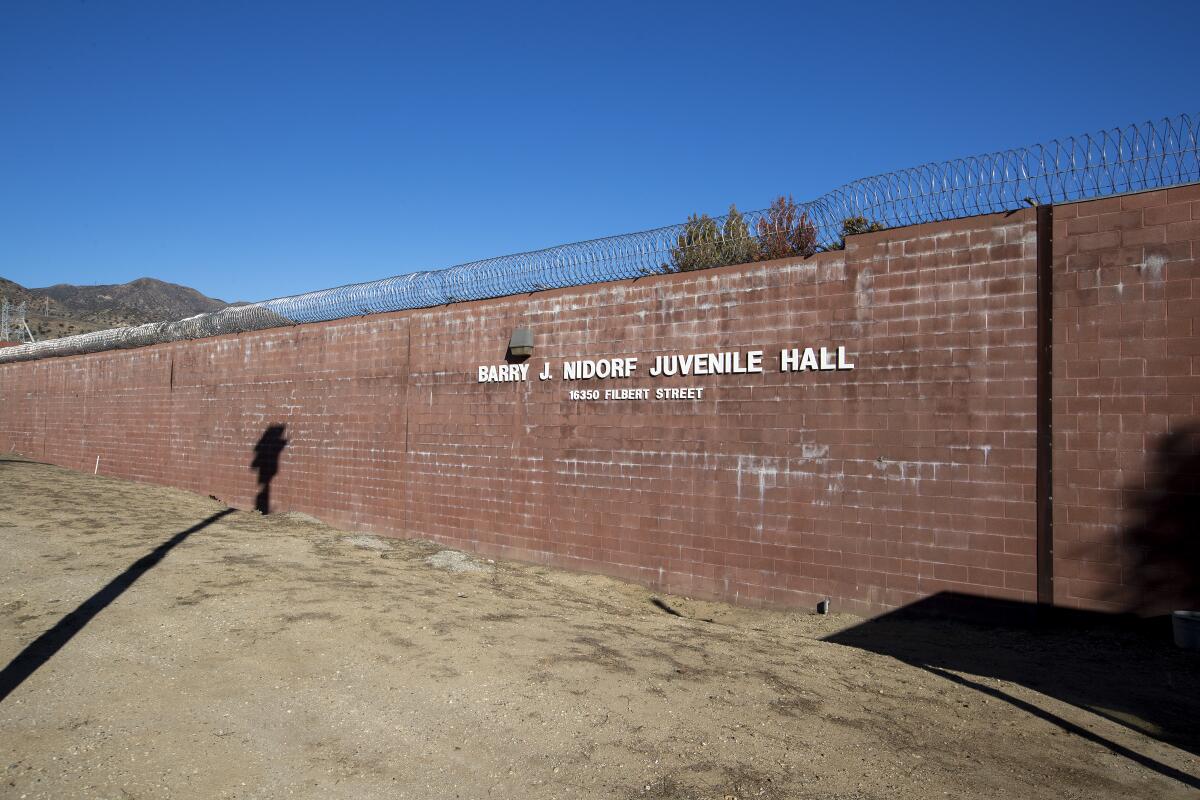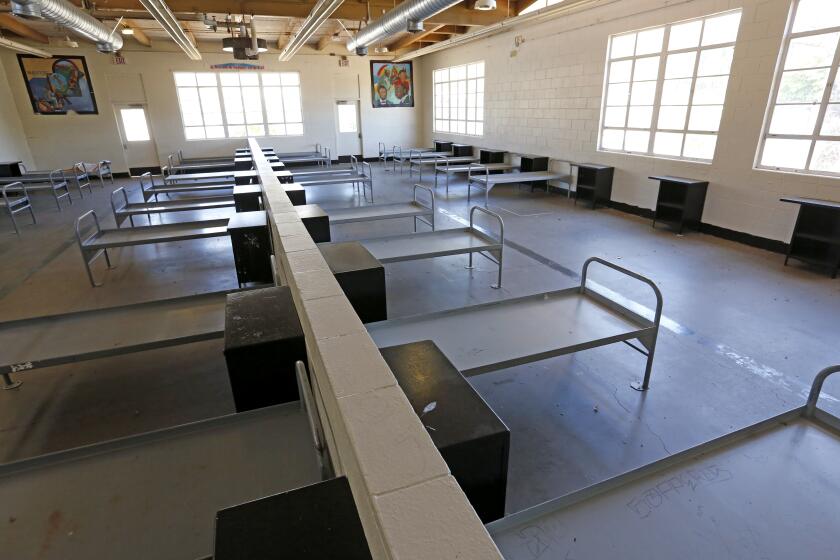Editorial: Juvenile hall death shows the system is dangerous to minors. Closure can’t come soon enough

- Share via
The apparent overdose death of an 18-year-old at one of Los Angeles County’s juvenile halls goes beyond tragic. It is a mark of shame on a county that has repeatedly failed in its duty to keep young people in its custody safe from harm.
As The Times reported Tuesday, the young man was treated with the opioid antidote Narcan in his room at Barry J. Nidorf Juvenile Hall in Sylmar, but he could not be revived.
At least two juveniles at Nidorf were administered Narcan and hospitalized in February, one of them twice. They survived. An April 7 report by Inspector General Max Huntsman said fentanyl was recovered during a search of their rooms and the dorm. The report noted several ways contraband can enter the supposedly secure facility: It may be thrown from outside, over walls on which Probation Department staff have discovered painted directional arrows; dropped from drones sent overhead; or hidden among visitors who enter unsearched through poorly managed front gates.
If fentanyl can enter in this way, so can weapons and other dangerous materials.
Los Angeles County juvenile halls have been cited for unconstitutionally poor conditions for decades. It’s too late to save them.
The indispensable prerequisite to rehabilitating minors who are accused of or found to have committed crimes is to keep them safe. Juveniles should be more secure inside — less able to inflict harm and less likely to suffer from it — than they were outside. Any institution that fails to meet that goal has failed not just administratively but morally.
The Times noted that the attorney for one of the juveniles who overdosed in February said his client had no drug issues before being transferred from the state Division of Juvenile Justice to L.A. County.
Other young people at Central Juvenile Hall near downtown Los Angeles and Nidorf have said they have less to do, fewer classes to attend, fewer programs in which to participate, less outdoor time and less security in L.A. than they had in state custody. That’s alarming, because state juvenile justice programs are due to close at the end of June, and all youths are to be transferred to their home counties. L.A. is unprepared and has no prospect of becoming ready on time.
And county and state officials know it. The county has been on notice for more than a year that its management of both Nidorf and Central has fallen dangerously short. The Board of State and Community Corrections has repeatedly found both facilities unsuitable. The board was expected last month to order both to close, but it gave the county several additional weeks to fix facility and staffing problems.
The County Board of Supervisors have shown they can’t fix the facilities — and should not fight their closure now.
L.A. County supervisors recently adopted a proposal to reopen a third juvenile hall to relieve pressure on Nidorf and Central, and to tap reserve sheriff’s deputies to fill slots for probation and security officers who don’t show up for work.
The juvenile hall failures are embedded in the Probation Department’s internal culture and cannot be turned around in time for the transfer of youths from state custody, if at all. The county can’t secure the perimeters of these facilities or provide the proper rehabilitation programs. And it has demonstrated that it can’t keep juveniles in its custody safe.
The state board’s staff is recommending against accepting the county’s corrective plans and in favor of revoking its authority to operate the juvenile halls. That’s the right move. The halls should be shut as soon as possible, before anyone else dies.
More to Read
A cure for the common opinion
Get thought-provoking perspectives with our weekly newsletter.
You may occasionally receive promotional content from the Los Angeles Times.












